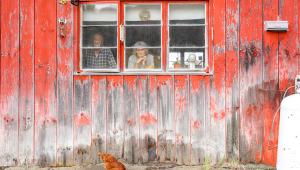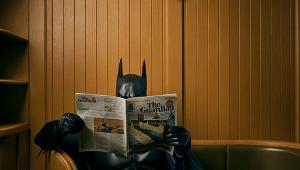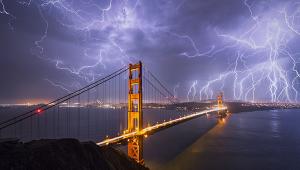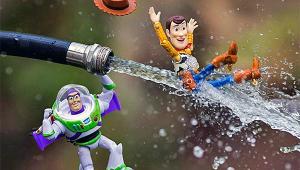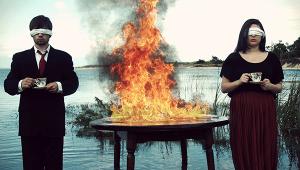Wild Horses: Lisa Cueman Celebrates Their Survival
“It’s important to have an awareness of time, tide, and weather.”
To photograph the wild horses of the Outer Banks of North Carolina you have to deal with the fact that they are indeed wild and thus not particularly welcoming of a photographer’s attention.

All Photos © Lisa Cueman
But first you have to deal with the Outer Banks, a 200-mile stretch of barrier islands off the coast of North Carolina. “It’s important to have an awareness of time, tide, and weather,” Lisa Cueman says of the location. “You can get into your photography, but not so much that you lose a sense of your surroundings.” To reach those surroundings, Lisa hires a guide. “Because of the nature of the barrier islands and the constant shifting of the sands, you really need someone [who can] navigate the waters comfortably, and even that being said, I have yet to go out and visit [the horses] without running aground.”
The islands where Lisa photographs are at the southern end of the Outer Banks and are freely accessible to the public. She began photographing a particular group of horses there in the spring of 2012 after several years’ experience photographing domesticated horses.
“No one feeds them or provides shelter. Out there it is the way it was centuries ago.”


“These horses are on protected land,” Lisa says, “but there’s no one out there caring for them. It’s not a reservation or an attended wildlife refuge. No one feeds them or provides shelter. Out there it is the way it was centuries ago.”
She emphasizes that point when she talks to people about her work. “The horses are allowed to live [there] as they always have. They’ve adapted, and they are examples of letting nature go its way, [with] all the natural balances of nature. And it’s not always pretty. Some horses out there are clearly struggling because they’re old and it is a tough environment.”
Learning about that environment and how the horses survive in it is vital to her work. “One of the interesting things is there’s a freshwater table underneath the surface,” she says. “The horses have learned to dig down to access this freshwater, so they basically travel to this watering hole once or twice a day. It’s a very organized line of drinking rights, and in that observation I really can see the herd dynamics. Also, one of the unique characteristics of these horses is all the stallions and their mares co-mingle because they don’t have the broad expanse of land like horses out West. It’s behavior quite unique to these herds, and I see that play out around the watering hole [where] each harem takes its own turn, and each stallion really protects his mares and will keep the other horses at bay until his have had enough to drink.”
For the most part, the horses are not very approachable. “They will turn and walk away; that’s kind of the initial response to a human presence,” Lisa says. “I typically spend about two weeks photographing, and I’m out there every single day, probably for a total of nine or 10 hours with a midday break, and it’s usually after the first week that they will start to ignore me.”


Sometimes becoming almost invisible to the horses can result in a great image; the first photo here, for example. “I was working with my long lens setup and this stallion pushed his grouping of mares right by me, probably three feet away, and I literally turned around and grabbed my little point-and-shoot and got that shot. You can’t walk up to that—they’ll just walk away from you—but you can become invisible to them.”
The horses are not “overly threatening,” Lisa says, but she needs to pay attention to the stallions, especially in the spring when it’s breeding season and they tend to be more aggressive. “I’m very respectful of boundaries,” Lisa says, “and because I’m working with long lenses I’m able to keep my distance. I haven’t seen it so much with this herd, but I’ve been around enough wild horses to know that I need to be able to step away pretty quickly.”
For a day’s shooting she’ll typically carry one camera body and her 200-400mm zoom and 500mm telephoto, plus batteries and cards and a tripod or monopod. A second body and another lens will be in the boat. Almost everything is shot with the tripod, but for deeper water situations she’ll work with the monopod for its maneuverability. “I often can be in three-and-half feet of water,” she says. “It can be tough on the gear.”

The work takes patience and endurance as she follows the herd and waits for “a confluence of elements.” There are days when the horses stay deep in the trees and she won’t take a single picture. “But the more you observe, the more you get a sense of how dynamics might play out,” she says. “The shot of the two stallions battling came about at the end of a two-week period, and those two had been having what I’d call little spats that weren’t very dramatic, but they were clearly aggravated by each other’s presence. I’ve been around horses all my life, and I knew something was going to happen. This was an all-out battle, three or four minutes of intense fighting. So part of being out there all the time is getting familiar with the dynamics within each herd.”
Lisa shoots in color, then removes the color from selected images, doing the majority of her postproduction work in Lightroom. She has a preset she created that she feels works well with the Outer Banks images, giving them a warm tone that’s not quite full sepia, a tone that imparts “a timeless appearance that’s fitting for the subject and the circumstances of horses’ lives in this area.”

She’s had exhibits of the Outer Banks photos, and National Geographic used one of the photographs at their Your Shot online page. “I’d love to expand my representation in galleries and would also love to do a fine art book of these images. There’s a lot to celebrate in the survival of these herds—it’s a testament to their tenacity and the respect they are afforded by the community, and that’s a wonderful thing.”
“I’ve been around enough wild horses to know that I need to be able to step away pretty quickly.”
A variety of Lisa Cueman’s images are at her website, lisacuemanphotography.com. Visit vimeo.com/70521393 to view a video of Lisa photographing on the Outer Banks.
- Log in or register to post comments



